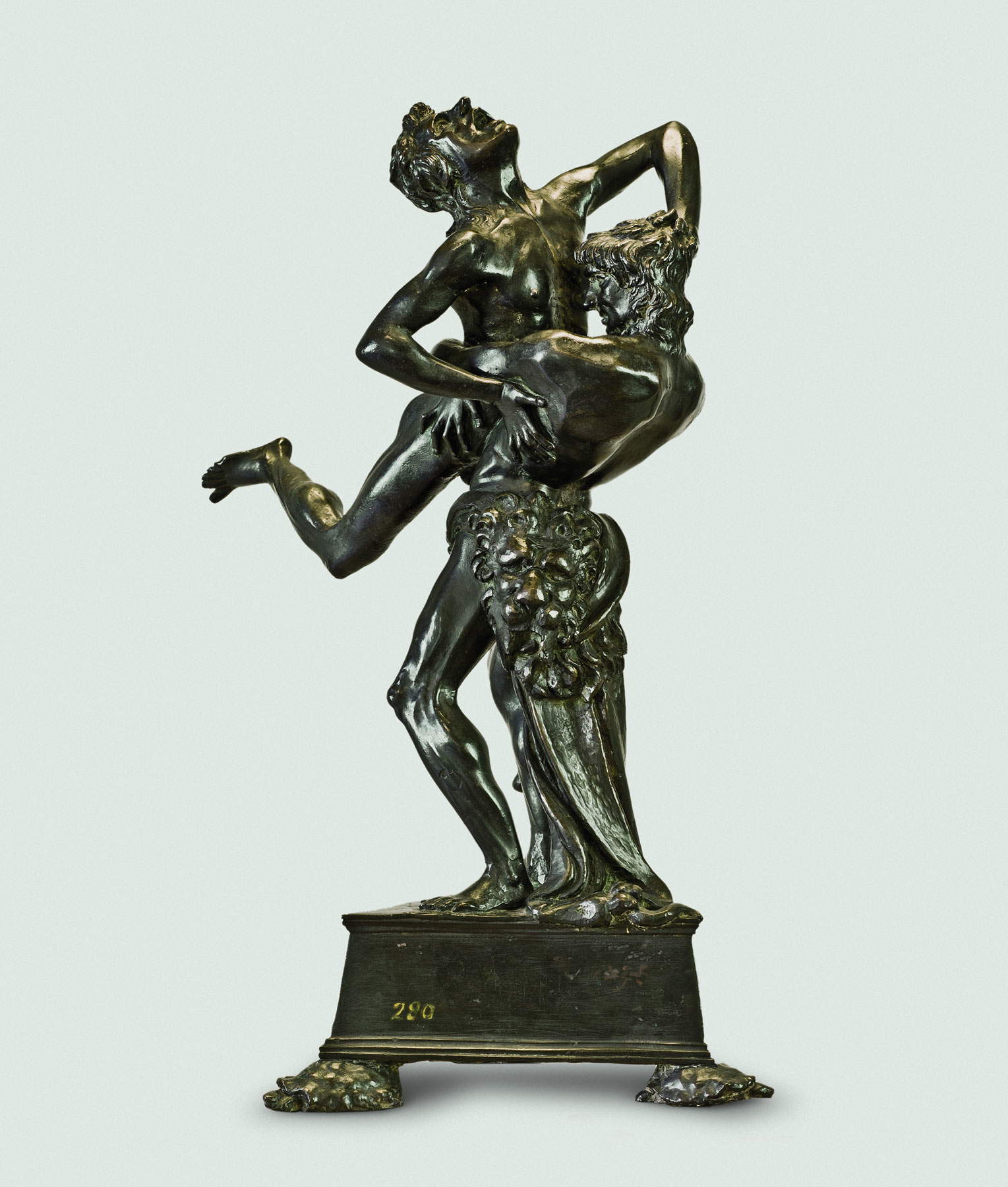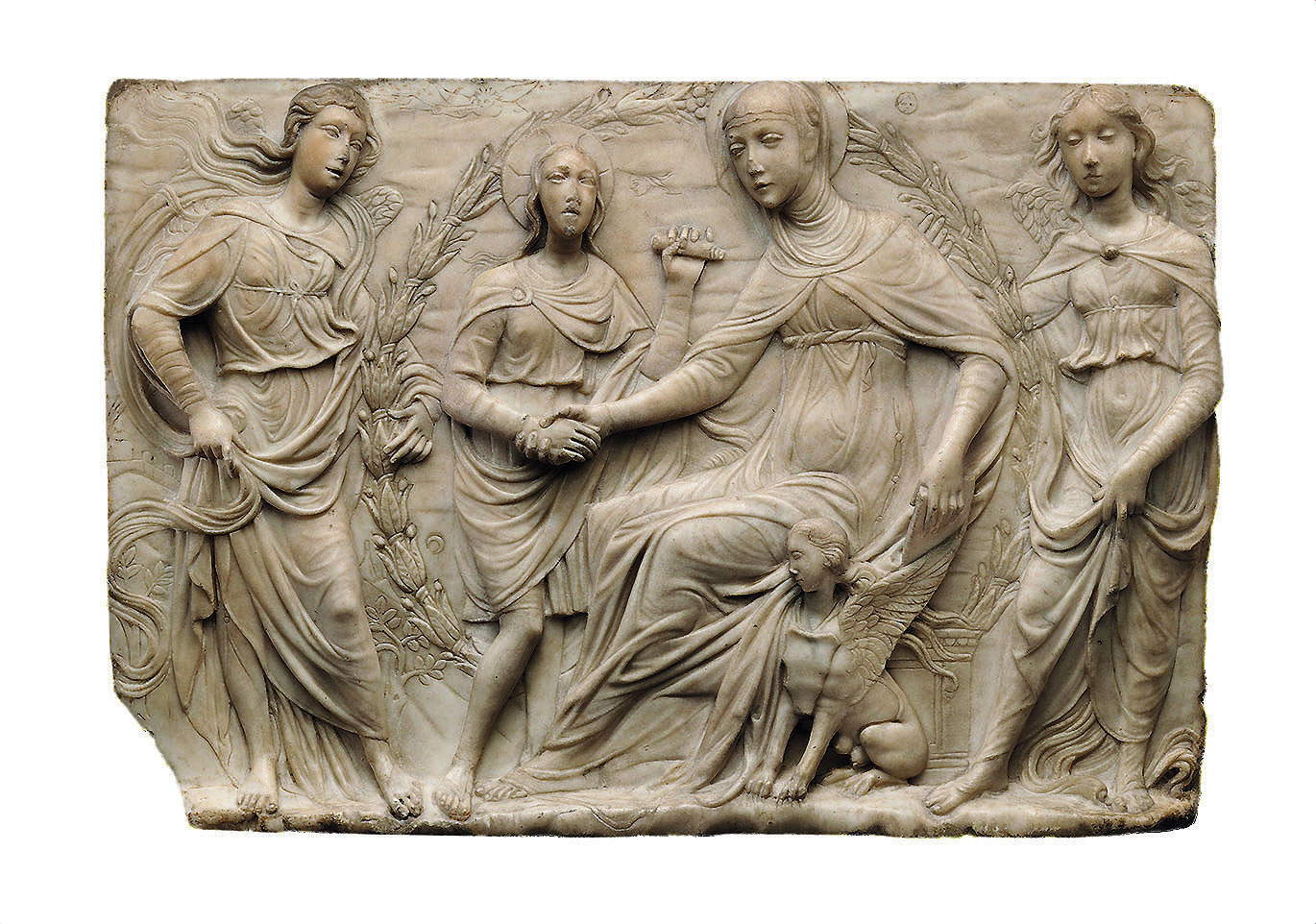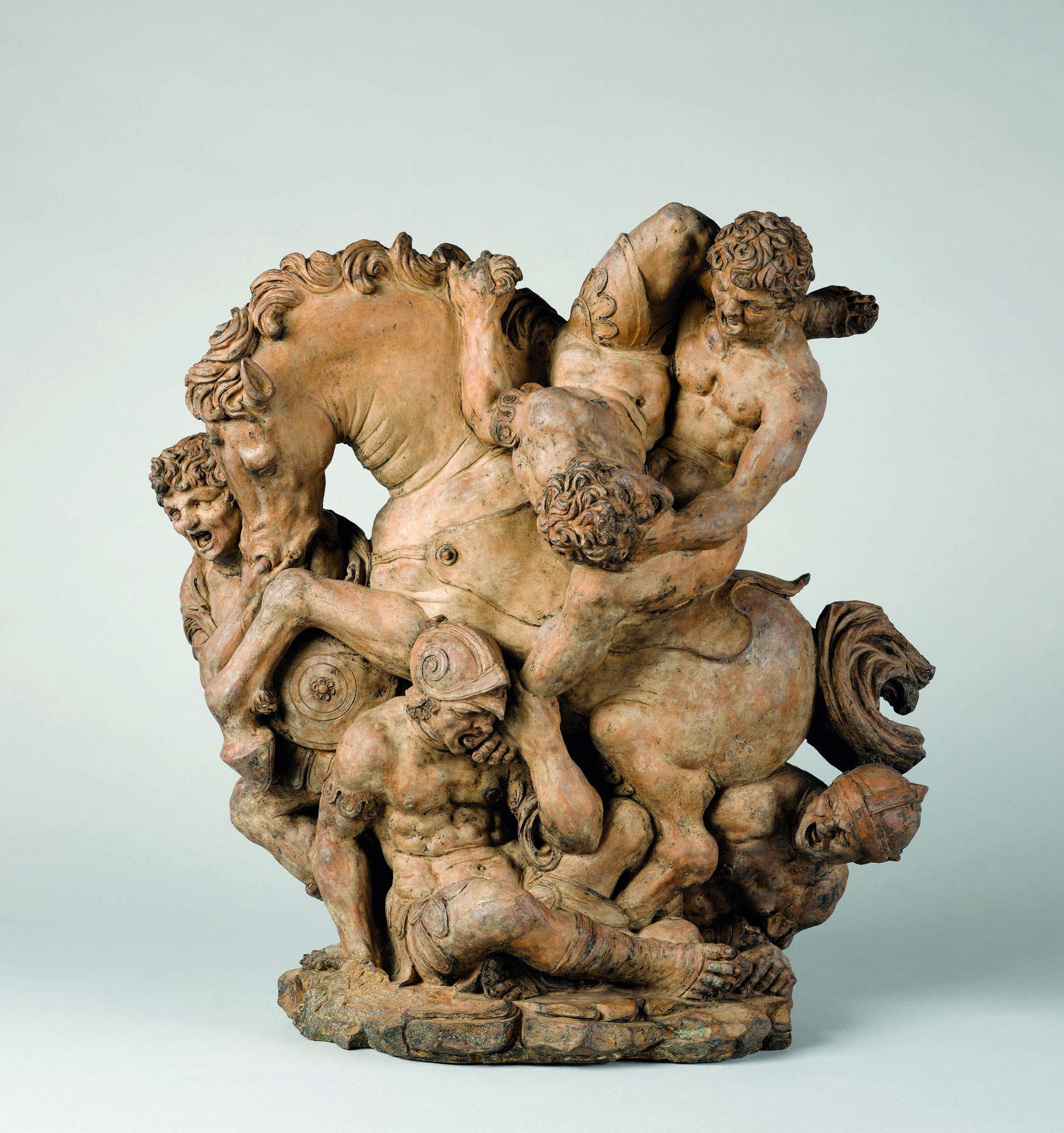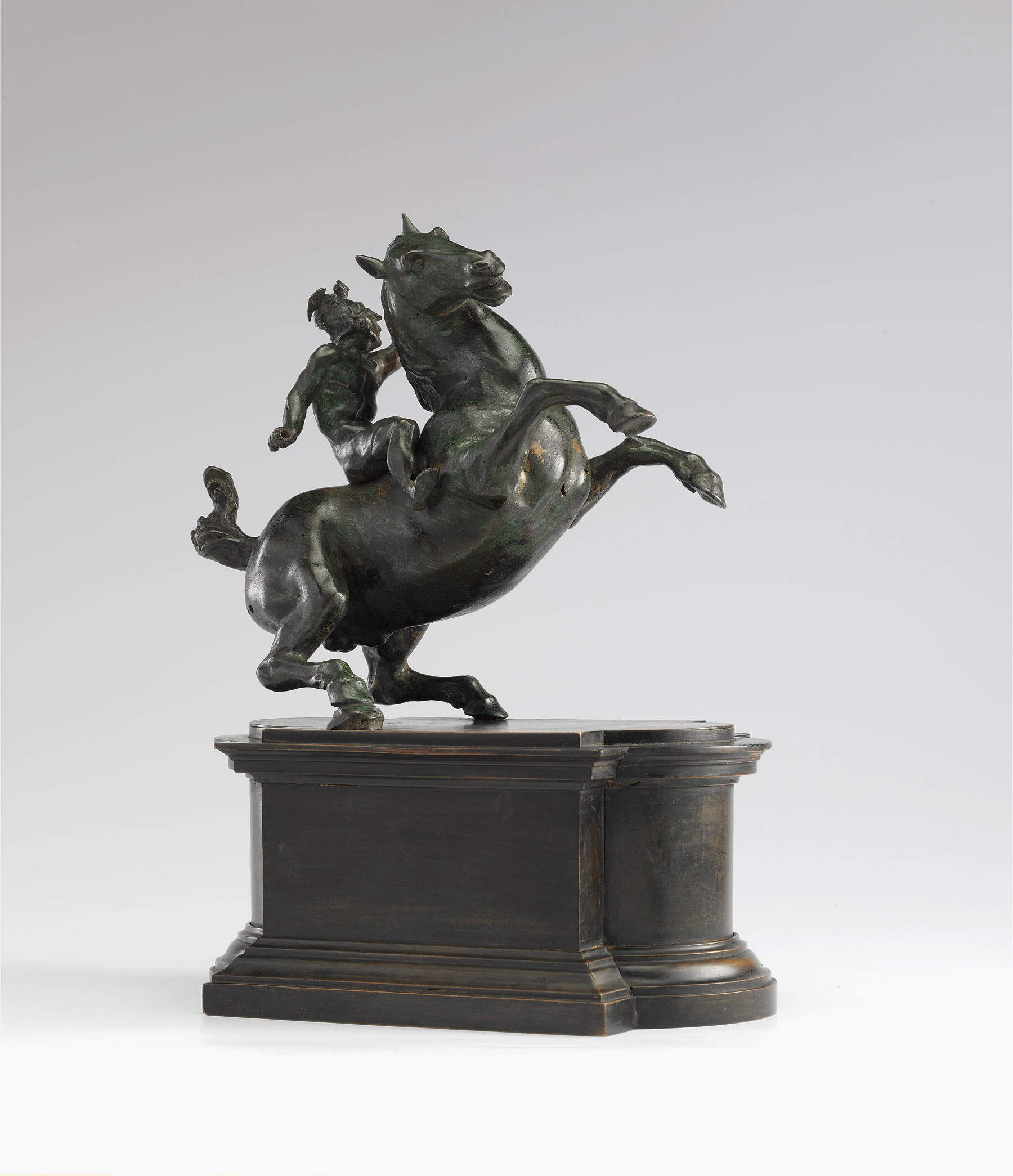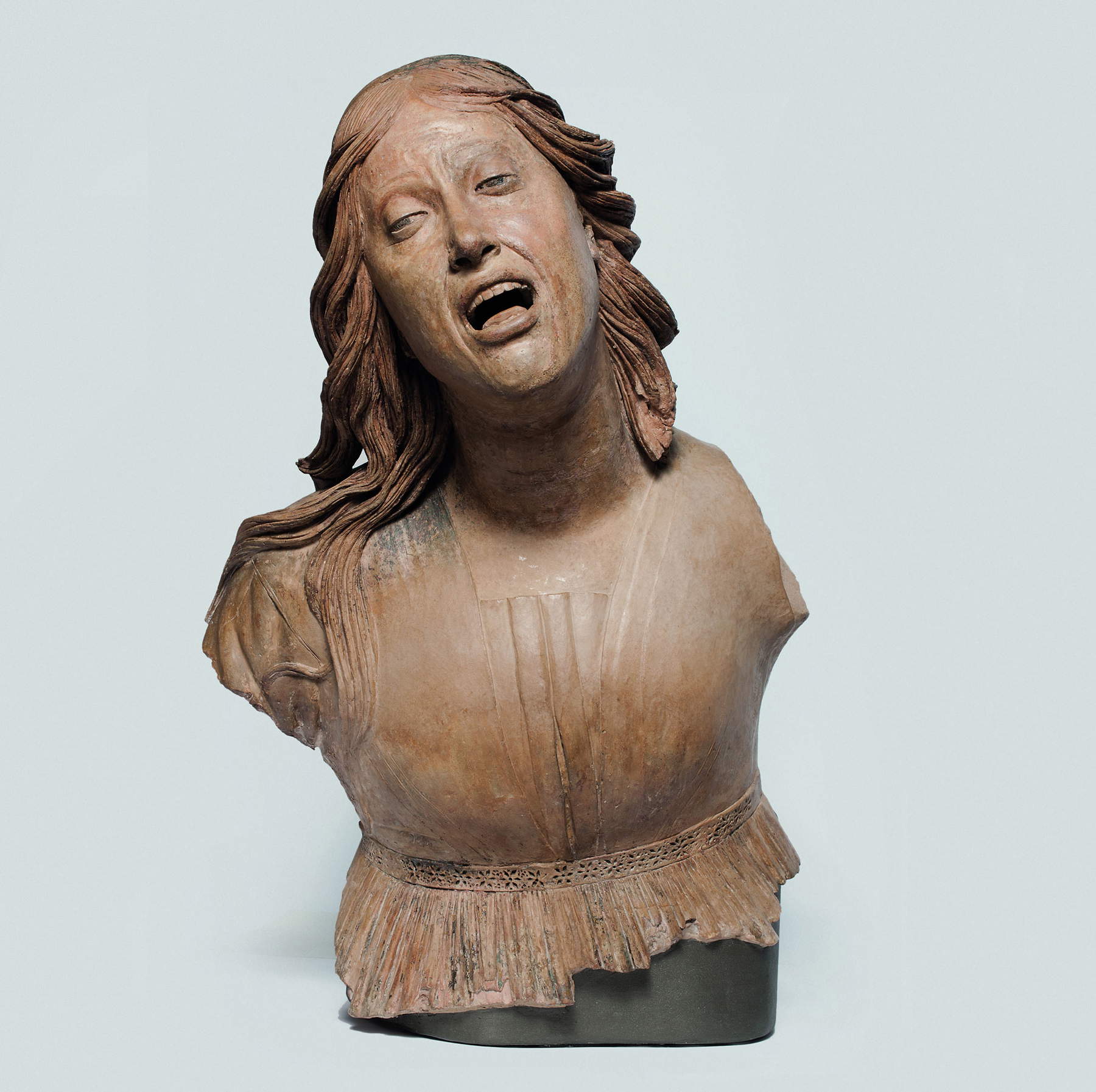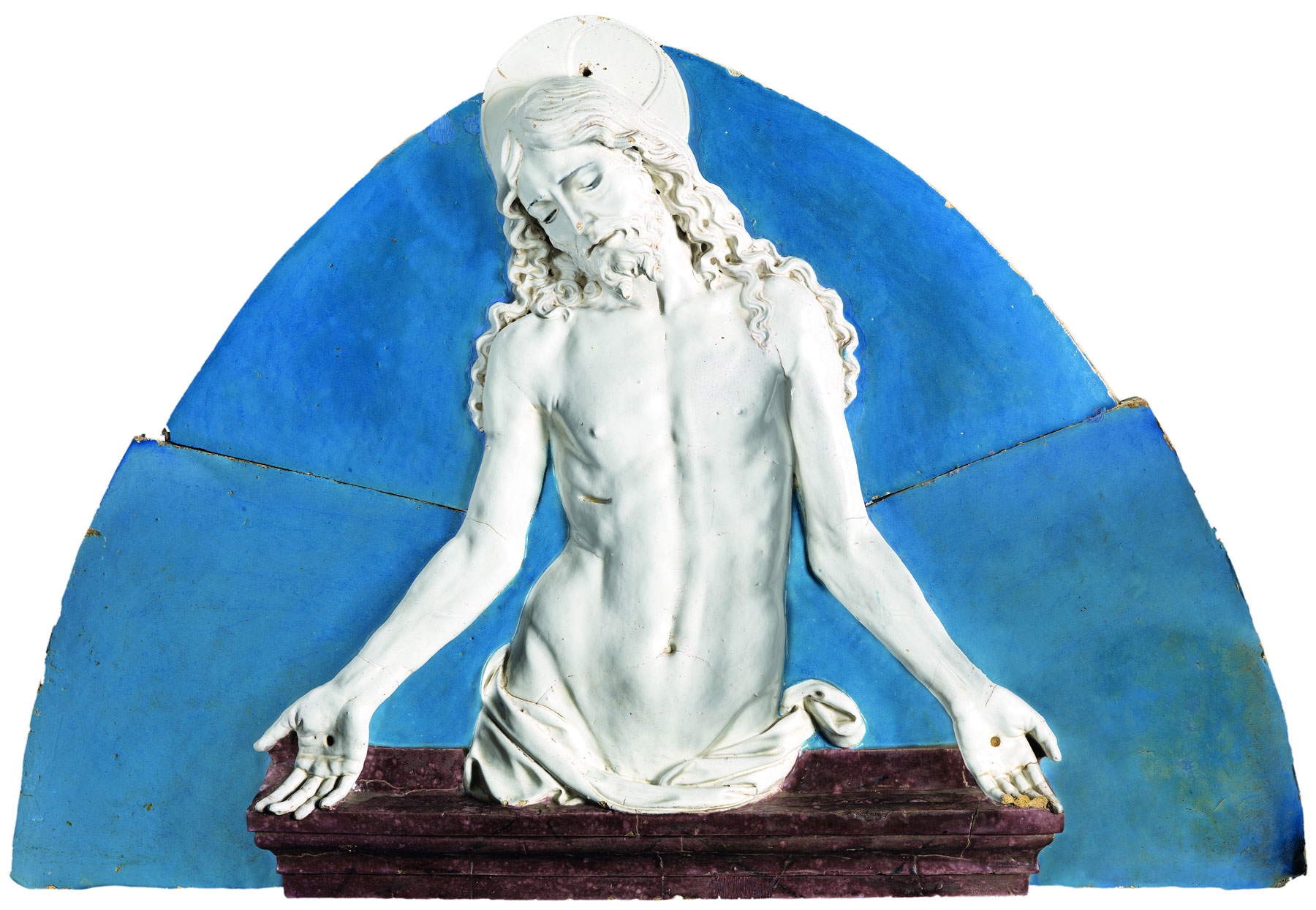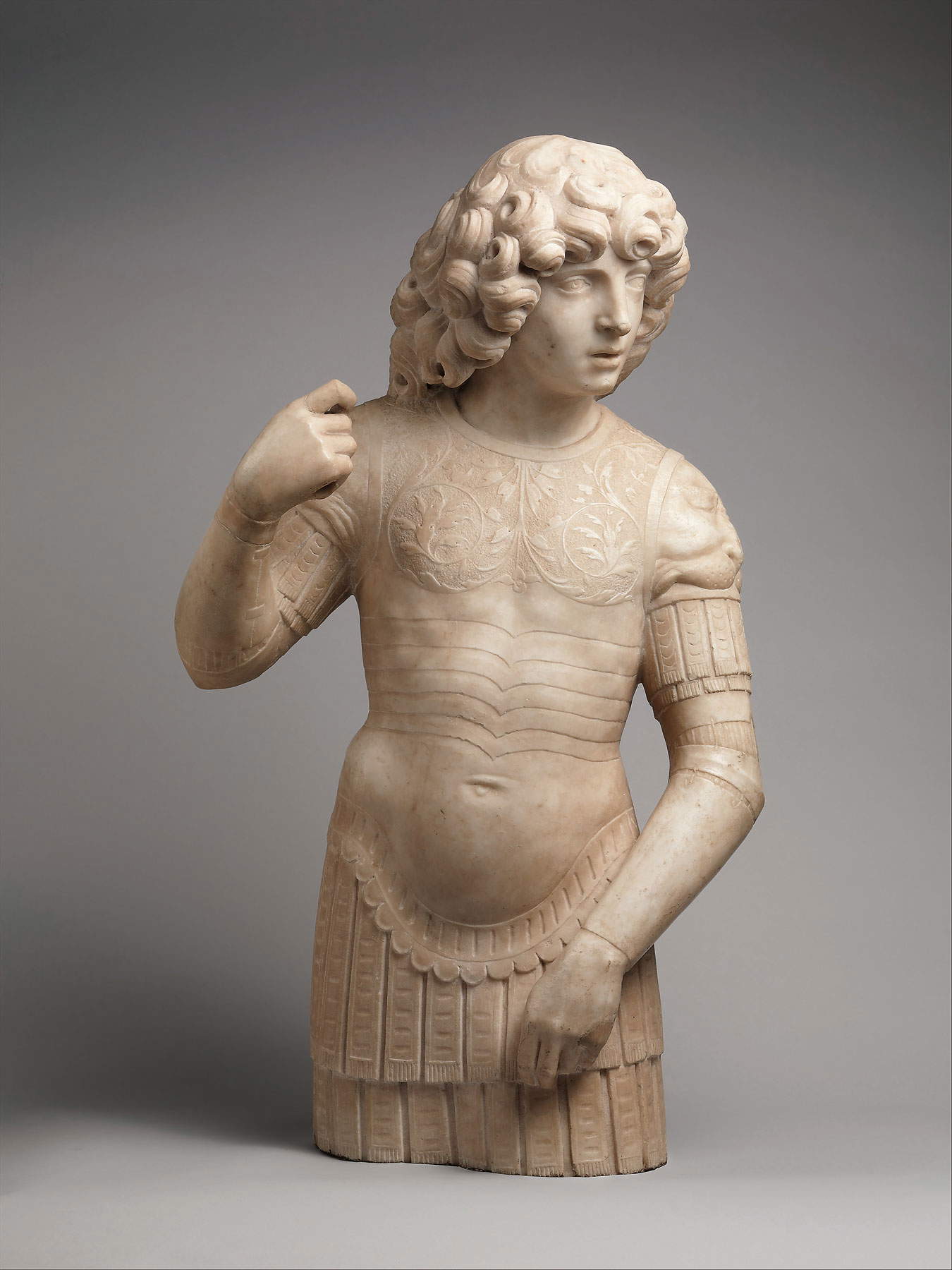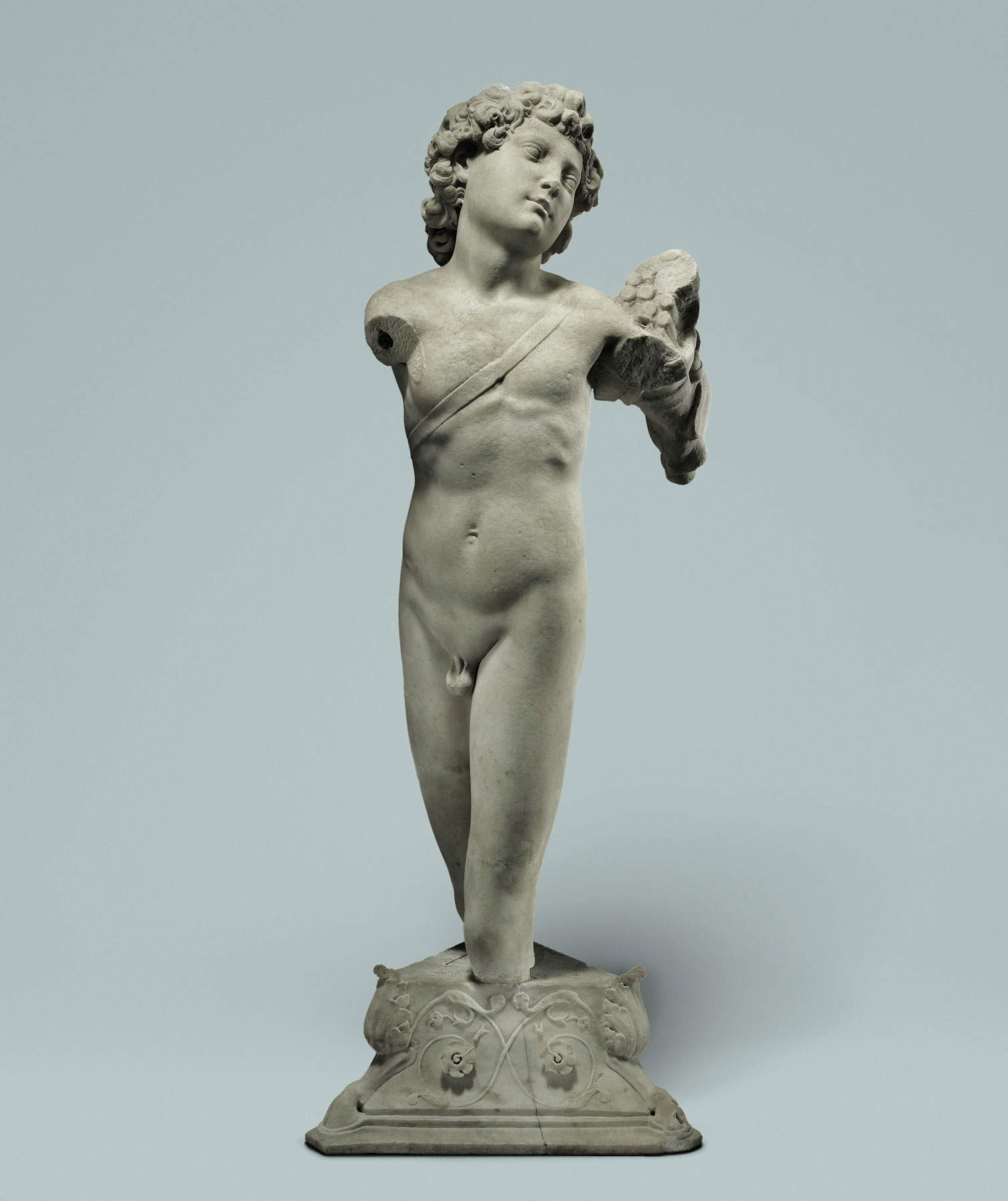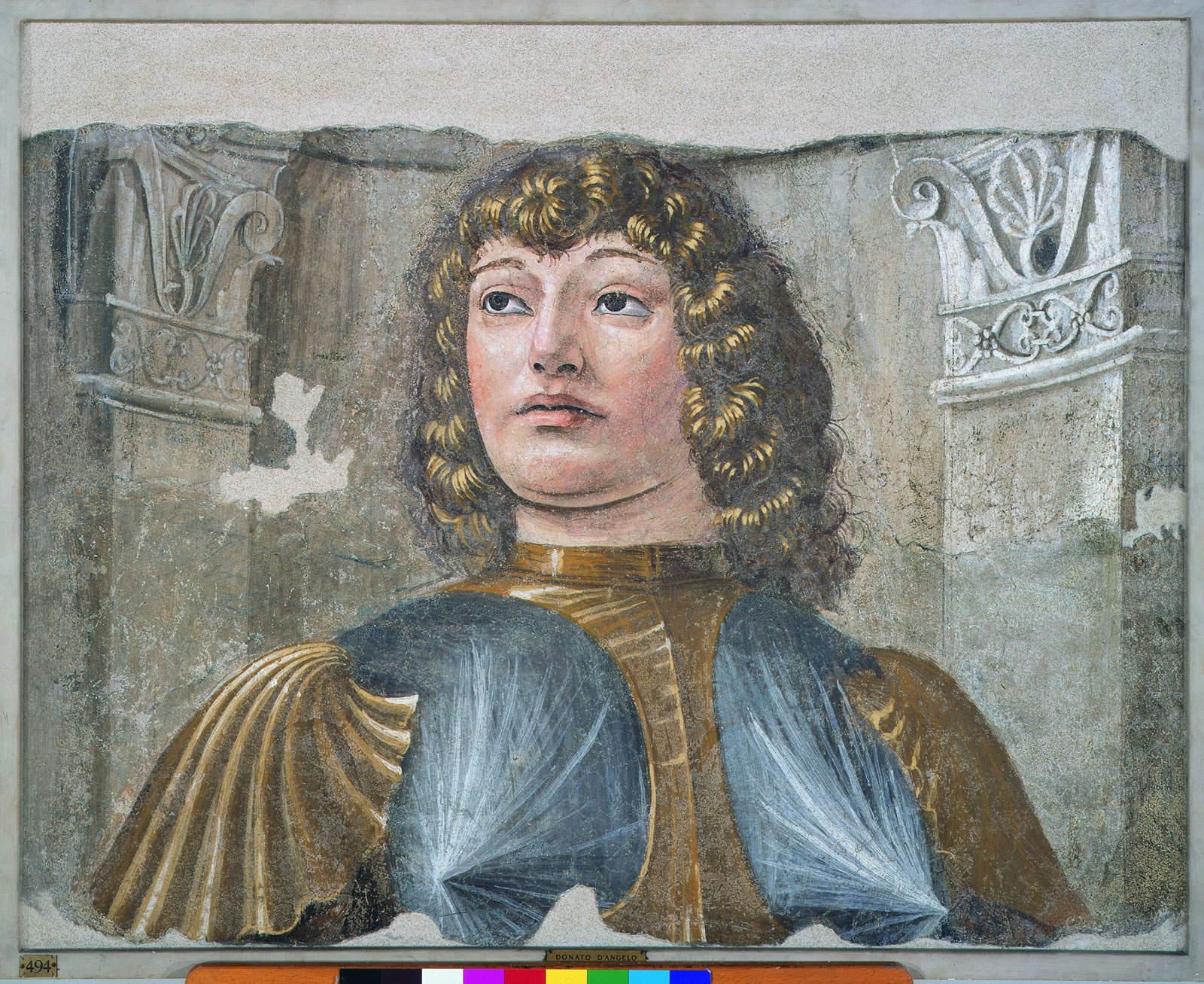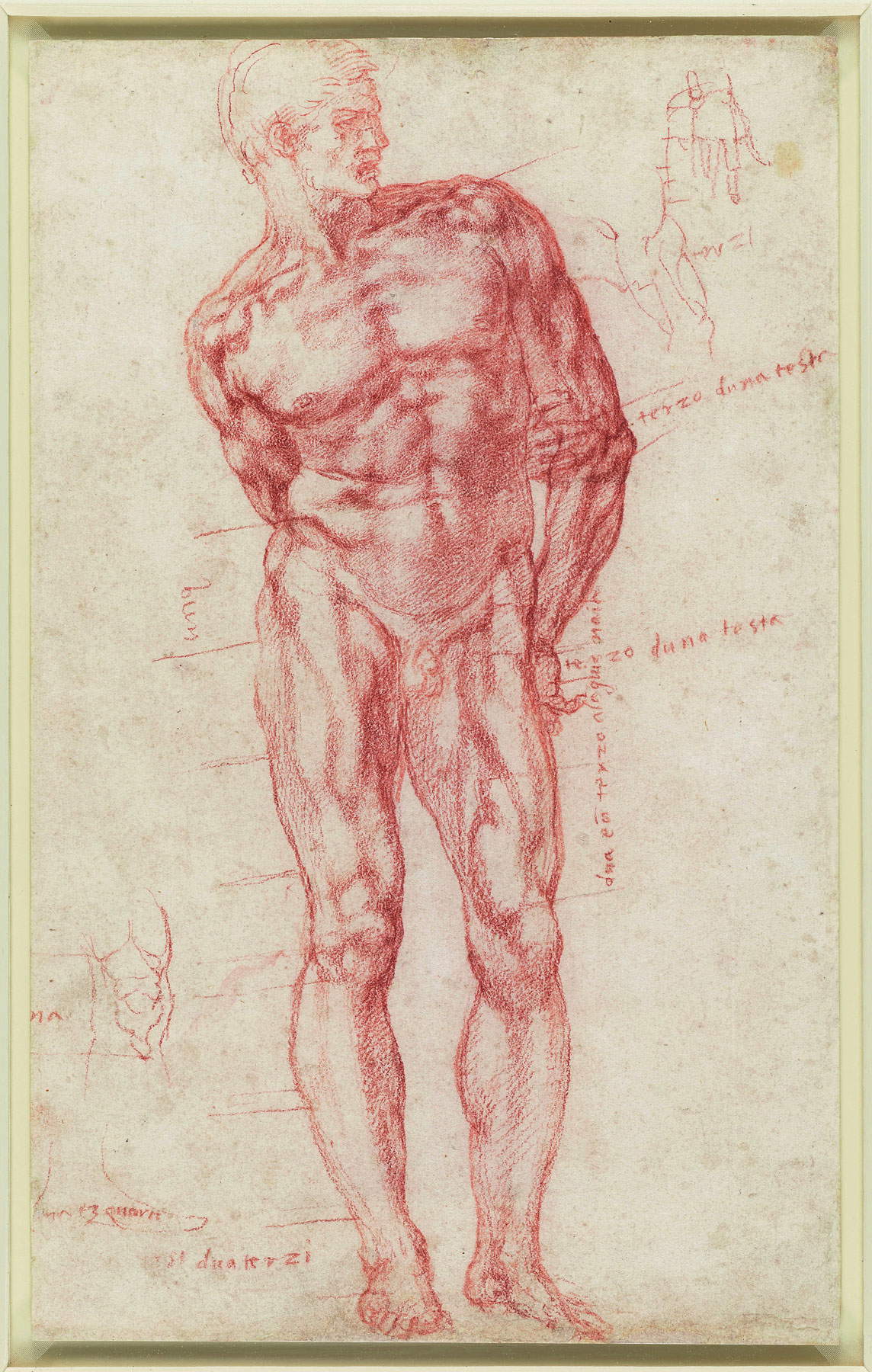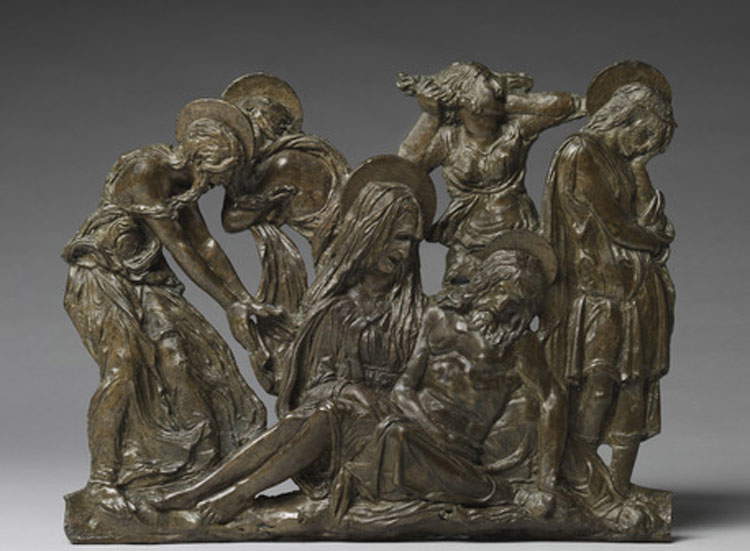by Redazione , published on 19/07/2021
Categories: Exhibitions
/ Disclaimer
From July 21 to Oct. 24, 2021, Castello Sforzesco in Milan is hosting "The Body and the Soul," a major exhibition on Renaissance sculpture, from Donatello to Michelangelo, with 120 works.
From July 21 to October 24, 2021, the Sale Viscontee of the Castello Sforzesco in Milan will host the exhibition Il Corpo e l’Anima, da Donatello a Michelangelo. Italian Renaissance Sculpture, curated by Marc Bormand (curator at the Department of Sculpture at the Louvre), Beatrice Paolozzi Strozzi (director of the Bargello National Museum from 2001 to 2014) and Francesca Tasso (curator in charge of the Art Collections of the Castello Sforzesco): the aim of the exhibition is to use sculpture, in dialogue with the other arts (painting, drawingsand other artifacts) to highlight the main themes of Italian art in the second half of the 15th century. The exhibition thus illustrates Italian Renaissance sculpture, which saw many great artists at work, including Donatello and Michelangelo but also Tullio Lombardo, Bertoldo di Giovanni, Antonio Pollaiolo, Bartolomeo Bellano, Bambaia, Francesco di Giorgio Martini, Sansovino, Giovanfrancesco Rustici, Cristoforo Solari, and many others.
The protagonist of the exhibition is the human figure, in its being body and soul, in the innovative interpretation given by the sculptors of the time. Body and soul are not opposed in Renaissance sculpture, but on the contrary, according to the theories of Leon Battista Alberti, the movements (i.e. drives) of the soul are made visible by the attitude of the bodies, just as physical torment is aimed at moving the viewer. Artists interpret this feature in all its richness, depicting bodies at rest, in motion, while they are struggling, while they are dreaming, highlighting the emotions of the soul, in both the sacred and profane realms, in a way that is both fiercely expressive and, conversely, gentle and delicate.
Beginning in the second half of the fifteenth century, Renaissance artistic production can no longer be limited to the Florentine point of view alone. In anItaly divided politically from Venice to Rome via Siena, Bologna, Padua, Mantua, Milan, and Pavia, different styles flourished, spreading thanks to many talented artists who moved throughout Italy sowing their ideas, while still confronting the diversity of local traditions. Florentine innovations and local traditions (not to mention the influence of Flemish and Burgundian courtly art) mingled in each of these creative hotbeds to give rise to an extraordinary variety of artistic languages.
 |
| Cristoforo Solari, Christ at the Column (early 16th century; marble, height 195 cm; Milan, Veneranda Fabbrica del Duomo) |
 |
| Antonio di Jacopo Benci known as Antonio del Pollaiolo, Hercules and Antheus (c. 1475-1480; bronze, 44 x 27 x 35 cm; Florence, Museo Nazionale del Bargello) |
 |
| Agostino di Duccio, Saint Bridget of Sweden Receives the Rule of Her Order (1459; marble, 42.5 x 63.8 x 7 cm; New York, The Metropolitan Museum) |
 |
| Giovanfrancesco Rustici, Scene of combat: knight defending himself against four soldiers (c. 1506-1511; terracotta with traces of bronze, 46.5 x 44.5 x 24 cm; Paris, Louvre, Département des Sculptures) |
The sections of the exhibition
The exhibition is divided into four sections (“Looking at the ancients: fury and grace,” “Sacred larte: moving and convincing,” “From Dionysus to Apollo,” and “Rome Caput mundi”) and welcomes more than 120 works with loans from the world’s most prestigious museums: the Metropolitan Museum in New York, the Louvre in Paris, the Kunsthistorisches Museum in Vienna, the Museo del Prado in Madrid, the Museo Nazionale del Bargello in Florence, the Victoria&Albert Museum in London, and the collections of the Royal Family of England.
Fury and grace constitute the first major theme covered in the itinerary. The interest in complex compositions and in the exasperation of body movements becomes prevalent in numerous sculptors and will be documented through works by Antonio del Pollaiolo, Francesco di Giorgio Martini or Bertoldo di Giovanni, all the way to Verrocchio, Leonardo and Gianfrancesco Rustici, bringing into play both the complexity of muscular strength and the twists of the male body and the expressive effect of the soul’s most intense passions. At the same time, elegant draperies allow the artists to reveal the fascination of the human figure, whose lightness is enhanced by the movement of clothes and veils, in a practice of unveiling that then reaches the representation of grace through the nude, both female and male. To move and to convince become the two key words in religious sculpture: following the work done by Donatello around 1450, lemotion and the motions of the soul take their place at the center of artistic practices, in the desire to touch the spectator’s soul deeply and even violently. It is thus a true theater of feelings that unfolds in northern Italy between 1450 and 1520, particularly in the Deposition of Christ groups, such as those of Guido Mazzoni in Emilia and Giovanni Angelo del Maino in Lombardy. This pursuit of religious pathos also sincarna in the moving figures of Mary Magdalene or Saint Jerome that flourished in Italy during this season.
Continuing, between the late fifteenth and early sixteenth centuries, reflection on classical antiquity is expressed in the works elaborated from the great classical models such as the Laocoonteo the Spinario, moving between the two extremes of the Apollonian and the Dionysian. At the same time as in painting (see the gentle style of Perugino or the young Raphael) sculpture develops the search for a new harmony that transcends the naturalism of extreme gestures and feelings: this occurs particularly clearly in Veneto and Lombardy (with Riccio, lAntico, Moderno, Cristoforo Solari, Antonio Lombardo, up to Bambaia), but this search for expressive beauty sincarna with equal force in Tuscany as well (Jacopo Sansovino, Baccio da Montelupo, Andrea della Robbia). Finally, beginning at the end of the century, we return to Michelangelo to find a formal synthesis that integrates scientific knowledge of the body, the absolute ideal of beauty, and the desire to surpass nature with art, according to a path that from the youthful classicism of Cupid through the titanism of the Slaves of the Louvre (in Paris), arrives at the alignable and sublime of the Rondanini Pietà (in Milan).
 |
| Leonardo da Vinci (attributed), Horseman on rearing steed (early 16th century; bronze, dark green patina, 24 x 28 x 15 cm; Budapest, Szépmuveszéti Múzeum) |
 |
| Guido Mazzoni, Mary Magdalene (1485-1489; terracotta with traces of polychrome, 66 x 42 x 42.5 cm; Padua, Museo d’Arte Medievale e Moderna) |
 |
| Giovanni Angelo del Maino, Mary Magdalene and St. John the Evangelist (before 1515; carved, gilded and painted wood, height 135 and 177 cm; Como, Duomo) |
 |
| Andrea della Robbia, Christ in Pity (ca. 1495; glazed terracotta, 70 x 105 cm; Florence, Fondazione Cassa di Risparmio) |
Practical information
Sponsored by the Musée du Louvre in Paris, the City of Milan | Culture and the Superintendence of Castello Sforzesco, the exhibition is organized by Civita Mostre e Musei. Finestre Sull’Arte is the exhibition’s media partner. A scholarly catalog edited in Italian and French by Officina Libraria accompanies the exhibition. The exhibition can be visited during the opening hours of the Castello Sforzesco Museums: Tuesday through Sunday from 10 a.m. to 5:30 p.m. Last admission 5 p.m. (Only visitors already in possession of a ticket. The ticket office closes at 4:30 p.m.). Closed Mondays, December 25, January 1, May 1. Single ticket for Castle Museums and exhibitions: 10.00 full; 8.00 reduced 18-25 years and over 65; Free under 18. The exhibition is free for everyone every first and third Tuesday of the month from 2 p.m. For a complete list of categories entitled to reductions and free admission, you can visit theappropriate page on the Castello Sforzesco website. For all further info, visit the Castello Sforzesco website.
 |
| Tullio Lombardo and workshop, Young Warrior (c. 1490-1500; marble, 87.6 x 53.4 x 35.6 cm; New York, The Metropolitan Museum) |
 |
| Michelangelo Buonarroti, Cupid (1497; marble, 94 x 33.7 x 35.6 cm; Ministère français de lEurope et des Affaires étrangères, inv.R 26 350, on deposit in New York, The Metropolitan Museum of Art, L. 2009.40) |
 |
| Donato Bramante, Man at Arms (c. 1487-1490; fresco torn and transported on canvas, 90 x 113 cm; Milan, Pinacoteca di Brera) |
 |
| Michelangelo Buonarroti, Male Nude (1515-1520; red stone with stylus traces on paper, 291 x 180 mm; Windsor, Royal Library) |
 |
| Donatello, Lamentation over the Dead Christ (c. 1455-1460; bronze, 32.1 x 41.7 x 6.3 cm; London, Victoria&Albert Museum) |
 |
| Agostino Busti known as Bambaia, Virtues (1520-1522; marble, 101 x 51 cm; Milan, Castello Sforzesco) |
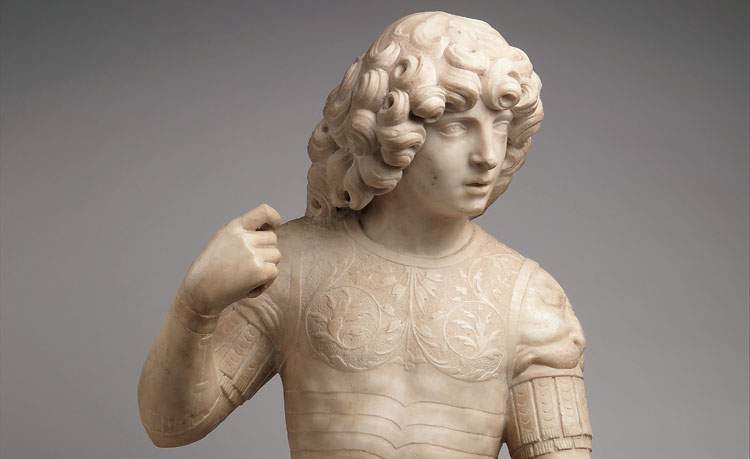 |
| Major exhibition in Milan on Renaissance sculpture from Donatello to Michelangelo |
Warning: the translation into English of the original Italian article was created using automatic tools.
We undertake to review all articles, but we do not guarantee the total absence of inaccuracies in the translation due to the program. You can
find the original by clicking on the ITA button. If you find any mistake,please contact us.

